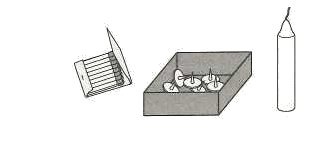Managing and beating anxiety

Anxiety destroys people, is crippling, dangerous and contagious - this post is to help shed light on how to overcome performance anxiety.
'Performance anxiety' might conjure up certain images - but there are many types of performance anxiety - we are talking here about 'intellectual performance anxiety' such as you might experience if you have to solve a maths problem in front of a group. Unless you have experienced true anxiety in a socially important environment, it is hard to relate. For those who have - you will understand.
Performance anxiety relates to experiencing anxiety under conditions in which you are being, or will be, observed and judged by others. It also usually includes a lack of control. In other words it is anxiety caused by potential harm to your social-image, that you cannot avoid. This is in contrast to the anxiety you feel when about to ride a wild bull. That type of anxiety relates to physical harm rather than social-image harm.
We have already discussed why you may suffer from anxiety -
go here if you haven't.
There are two ways to try and stop anxiety. One is effectively useless without the other, and the other, unfortunately ... takes a long time implement. The truth is that you will have to learn to 'manage' anxiety until you finally wrestle it into submission.
States and Traits
There are two things going on with anxiety. States and traits. When you are asked to come up to the front of the class and solve a maths problem you 'feel' anxious. Your heartbeat increases, temperature rises, pupils dilate etc and your brain releases hormones and chemicals that destroy your ability to access and use information from your memory. You are in a 'state' of anxiety. The fact that this has happened to you before and is likely to again in a similar situation is a 'trait'. You have a trait of experiencing anxiety but right now you are not in a state of anxiety. Traits have a genetic aspect to them.

A trait of Bruce Banner is that he turns into the Hulk, but he is not always the Hulk.
The bad news is that the more you fall apart in a situation due to anxiety the more it will happen - unless you take action! Lets go!
Two strategies
There are two main strategies to help you with anxiety. The first deals with the state and the second the trait.
The first seeks to deal with anxiety symptoms
as they occur by refocusing your mind on something that isn't your impending failure. Here is how the theory works.
You get called up to solve a maths problem. And your brain goes "Oh heck I'm gonna look like I shouldn't be in this job. They're all going to see that I am in fact useless, my reputation is finished, this is going to be horrible. My life is over... Bla bla bla" Your brain subsequently pumps chemicals into your body that prime physical action - not thought. Strategy one is to refocus your thoughts and stop this response by using up conscious attention.
So you think positive and attention filling thoughts. If you use up all your mental attention on other thoughts there is no mental room to be left for the negative thoughts causing you anxiety.
"I am good at maths. It's not going to be hard. The sky looks beautiful today. I'm going to nail this and show them how smart I am. I am valuable. I CAN do this". Then oxygenate - breath those nasty little chemicals out of your brain. BREATH!!
The problem with this stuff is... You know its all bluff. Your deep 'id' and the 'ego' know what is going on! You know it's a strategy. But as you get closer to the whiteboard, you realise its not working! "Oh no, I'm still freaking out, it's not working! I'm gonna look terrible - BREATH!! Hopefully by the time you get to the board you have hyper-ventilated and pass out before looking stupid (the final strategy!)
Also - the task you are meant to be doing requires all that mental space you are using to focus on positive thoughts - you have to shut this down to do the maths, and now your trait for anxiety kicks in - and anxiety is back with a vengeance.
I'm not knocking these strategies, they can help support you
with the other strategies - but having experienced the above I can tell you that once anxiety gets you it really gets you. These strategies are supplemental to a plan that focuses on the trait.
Strategy two - the long road of truth
Ah, this will never sell a book - but it seems to be the truth, at least mostly. The way to not be so inclined to become anxious is to change the underlying beliefs that support it. You need to build up an immunity to the trait.
What causes anxiety is the public exposing of the 'You' that really lives in your body rather than the public image 'you' that you pretend to be. The forced exposure of the discrepancies between the two is interpreted by you as harm to your social image and thus is to be feared (the research calls this 'shame'). The response is anxiety.
We all present ourselves in a light that reflects how we want others to see us. I want you to think of me as smart, intelligent, competent, and confident so I present myself in ways that achieve this. I show my strengths and hide my weaknesses. Thus I pick the times and environments that best suit me to do things. Where it goes wrong is when my power to do this is removed and my weaknesses are exposed - destroying the strawman I have put so much hope in.
Three strategies to work on the anxiety trait
One: The way to beat anxiety is to kill the strawman, the public image, the fake 'you'. And that is why it is so damn hard. Stop engaging in 'image-management' and let be what will be. Give the world what you are - a real person with strengths and weaknesses.
Two: You have to actually believe that not being able to answer maths questions on the board (or whatever your unique weakness is) doesn't matter. You have to believe that when 20 people laugh at you for getting an easy answer wrong (or that one person who's approval you so seek) - that it doesn't matter because they are wrong. You must believe that you are okay regardless of the thoughts and opinions of the pack. That you are learning, and learning begins with truth.
The doing of this takes time. Next time you are becoming anxious because you are put on the spot, remember 'it doesn't matter what these people think'. Believe it. Next - getting it wrong doesn't mean you are unintelligent. It really doesn't. You need to believe this - it is true. When you believe it your brain will not interpret potential failure as a threat to self.
Once you are working on one and two you must continue to cultivate these beliefs. Because anxiety is a trait it is like a weakened muscle. You need to beef up the supporting muscles which are the co-workers confidence and practice.
Third: Manage the situations that evoke anxiety in order to develop confidence. Identify the situations that produce anxiety and begin to play/experiment with them. You are experimenting with your own responses. For this you need control over the situations. Be prepared to say no to people (like the teacher asking you to solve the maths problem).
Example:
I'll give you an example. I have a friend who had problems spelling and as a tutor hated writing on the whiteboard in front of other tutors. During workshops if he was asked to write on the board he would experience anxiety and spell the easy words incorrectly. Then he would dissolve into an emotional wreak for the rest of the day. He felt they were judging him - tutors have to be able to spell of you can't teach right?

To beat this- he confessed to his class of learners (not the other tutors) that he was bad at spelling. It wasn't that bad, and over a year his honesty allowed him to get in hours and hours of practice spelling on the board and experiencing what it was like to spell words right. And wrong. Not so bad. His confidence grew, and grew. When he went to the tutor workshop he DID NOT write on the board. He declined politely but firmly (don't set yourself up). He told them 'no I won't be writing on the board, get someone else'. But later he did offer to write a few words on the flip chart -a nice safe constrained job. (Being a jerk for a while may be the price you pay for beating anxiety - I'd rather be assertive that a jibbering mess).
Slowly he began volunteering to write on the board, but he would stop when he wanted. It was on his terms - he had control. Second, he admitted once to a group that he didn't know how to spell a word. It was no big deal. Someone told him the word and he wrote it down.
It has taken years but he can now stand up in front of hundreds of tutors and take notes on the board and he feels confident and in charge. He writes on that board like a boss. If he can't spell a word he just says 'how do you spell such n such'. His worth is not tied up with his spelling, he knows who he is. He doesn't care what others think. He is free.
It didn't happen fast - it took about four-five years. It required a combination of trait and state strategies, awareness of self, knowledge of triggers, knowledge and control of situations, and truth.
The end
So there it is. Not what you thought? No quick solutions - but the results are real. Keep in mind that you are
not worth what you can do. You are
infinitely valuable regardless of any performance task
. If the ignorant folk around you want to judge you on your performance - then you don't care... Cause you rock.

 Problem
Problem






















